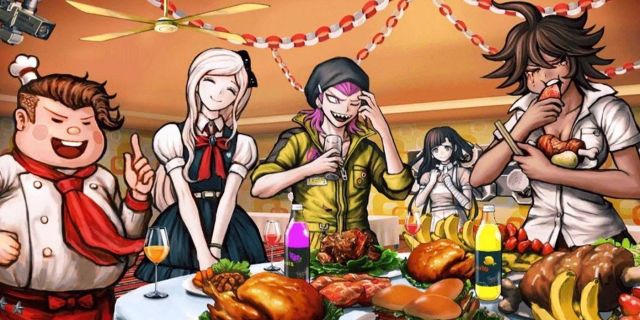The anime adaptation of the first Danganronpa game ended with an adorable bunny mascot waving at the viewer and saying that she will meet them again. This implied that an adaptation of the second game was in the works, but a few years later, a completely new anime called Danganronpa 3 was announced instead.
An official tweet by series creator Kodaka stated that the characters’ stories already ended in the game. But how true is that? And how feasible would an anime adaptation of this anticipated sequel have been?

How Danganronpa 2 Ended the Characters’ Stories
One of the many complaints regarding the first game’s anime adaptation was how poorly it handled the supporting cast’s character development. In the games, players have the option to get to know the other students through free time events. These events typically present the reasoning behind their motivations, backstories and future aspirations. The anime removes this entirely due to its short length, instead choosing to focus on the court and investigative aspects of the games. Because of this, most of the supporting cast receive very limited screen time, particularly those that die early on.
Danganronpa 2 follows a similar system, but with the addition of an “Island Mode” that further explores the characters’ backgrounds and relationships. Combining the knowledge gleaned from the characters’ backstories with the motivations behind each case allows for the player to empathize with them more. With all of this context removed, as with the first game’s anime adaptation, these characters’ stories would not feel as complete. In that sense, the characters’ stories really were completed within the game and it would be next to impossible for an anime adaptation to properly tell all of those stories without including the game’s social aspects.
The Difficulty of Adapting the Final Act of Danganronpa 2

The final chapter of Danganronpa 2 relies very heavily on the videogame medium in a similar vein to games like Doki Doki Literature Club and Nier Automata. The surrounding environment appears to break apart as literal code seeps through, signaling to both the characters and player that something isn’t quite right. It’s later revealed that all the characters exist within a virtual game, placed there by the previous installment’s protagonist in the hopes that Hajime and his classmates may be rehabilitated — before succumbing to despair and meeting Junko Enoshima.
This plot twist also brings about a bit of meta-humor by having the characters comment on the prospect of being avatars trapped in a video game. The entirety of this case, from its investigation segment to the class trial, does an exceptional job of tying the gameplay to the story. Every action, every button, and every decision carries weight and is carried out for a reason. An anime adaptation would have to sacrifice all of this due to the change in medium, losing most of the weight of the game’s narrative in the process. This isn’t to say that an anime adaptation is wholly impossible, but it would be incredibly difficult to successfully pull off.















Leave a Reply